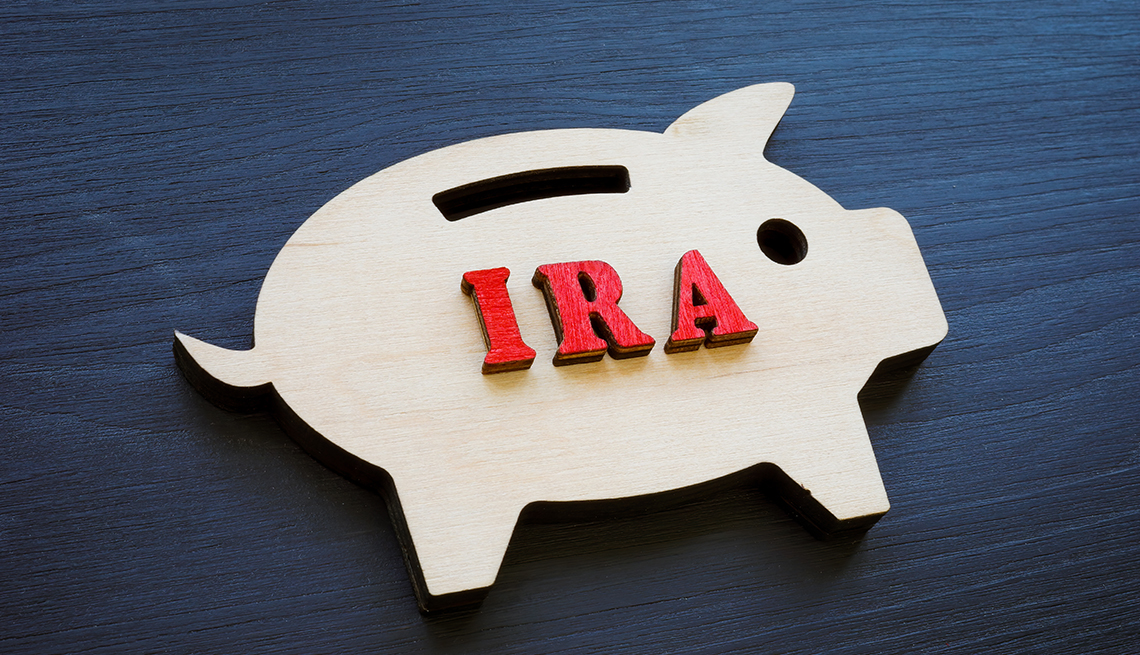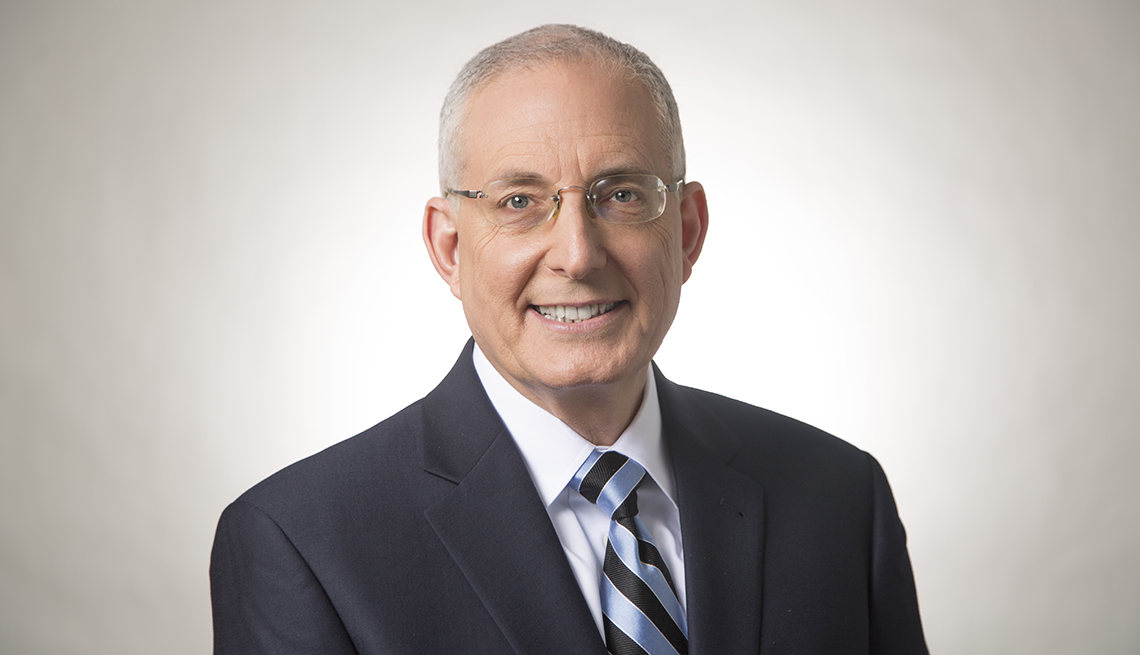Should I Cash in My IRA to Buy a House?
IRA expert Ed Slott answers your questions
Q: I would like to purchase a home using money from my IRA. When I withdraw from that account, should I have the 20 percent taxes also withdrawn? Also, what are the positives and negatives of paying all cash for a home while in retirement with no other income. I have not started drawing Social Security yet and I am 63.
Ask Ed Slott
Confused about IRAs, 401(k)s, Roths, taxes and more related to saving for retirement? Ed has the answers. Email your questions to IRAHelp@aarp.org.
A: There is no 20 percent withholding tax requirement for IRA distributions. That is only the case when you withdraw from your 401(k). However, if you withdraw from your IRA for any reason, you will generally have to pay tax on that distribution. You are not required to have taxes withheld on that distribution (you can opt out of any IRA withholding). But since you will likely owe tax on your IRA distribution, you will need to have the tax paid, either through quarterly estimated taxes or through tax withholding. Otherwise, you will face an IRS penalty. If you choose tax withholding, you should estimate the amount you will owe and elect withholding for that percentage.
Regarding paying all cash for a home in retirement: It’s generally good not to have debt in retirement, but you will need to make sure you are not using funds you will need in retirement. You said in your question that you will be using funds in your IRA to pay for the home. That can be very expensive since you will owe taxes on the funds you withdraw. You could lose a third of those funds to taxes, depending on your tax rate, which will likely be higher due to the large IRA withdrawal to buy the home. This does not sound like a good plan, unless you have no other non-IRA funds to use or you have a large enough IRA to provide you with income even after a withdrawal to buy the home.
Q: My husband took his RMD (required minimum distribution) for 2021, in February 2022. (People have the option of taking funds until April 2022.) The investment company sent him a Statement of Account which shows a normal distribution and did not indicate that it is an RMD for 2021. He contacted the company and was told that he would not receive a 1099-R for the distribution until 2023 because the funds were sent in 2022. How does he show on our 2021 tax form that he took out the funds to satisfy that year’s distribution requirement? I have tried and failed to find an answer to this in the IRS instructions.
A: You won’t see anything on your tax return stating you satisfied your 2021 RMD because there is no requirement or line on the return to show that. Your tax return only shows that you withdrew funds from your IRA during the year. The 1099-R only indicates that you took a distribution, whether it’s an RMD or any other distribution. It does not identify it as an RMD. You won’t report that 2021 RMD until the 2022 tax return since that was the year when it was actually withdrawn. But you have no problem here, as long as you have your own records to show that you have taken your RMDs each year.
Q: I have two 401(k) accounts — one is with Edward Jones, the other is with Sentry Insurance. Should we combine the two or keep them apart? I am 73 years old.
A: First, since you are 73 years old, you are subject to RMDs (required minimum distributions) each year, unless you happen to qualify to delay RMDs from your 401(k) plans. That exception to taking RMDs is only available from your 401(k) if you are still working for that company and you don’t own more than 5 percent of the company stock. This means you generally don’t qualify if the 401(k) is for your own business. This so-called “still working” exception to taking RMDs is not available for IRAs or other 401(k)s from companies you are no longer working for. If you are no longer working for either company, then you are subject to separate RMDs from each 401(k). Both RMDs cannot be paid from one 401(k). Also, RMDs cannot be moved to another company 401(k) or IRA through a rollover.
That said, for simplicity’s sake it’s a good idea to combine the two accounts, but you cannot do that unless one of the 401(k)s will allow you to roll the funds into it from the other 401(k) (excluding any RMD which, again, cannot be rolled over). The tax law allows you to combine the 401(k) funds by rolling one into the other, but 401(k) plans do not have to allow incoming rollovers.
If you are no longer working and you want to consolidate your retirement funds, you might want to consider rolling both of your 401(k)s into an IRA so you have all your retirement funds in one place where you have more control over investments and withdrawals. Also, once your funds are in your IRA, you can take your RMDs all from that IRA rather than having to take RMDs from each of your 401(k)s.
AARP Membership -Join AARP for just $12 for your first year when you enroll in automatic renewal
Join today and save 25% off the standard annual rate. Get instant access to discounts, programs, services, and the information you need to benefit every area of your life.
Q: I have a very small Roth IRA that I established many years ago. If I convert my rollover IRA (funded from old 401(k) accounts) to the Roth account, when does the five-year period begin for taking penalty-free distributions from my Roth? If I were to foolishly withdraw the entire balance after five more years go by, would any amount be taxable? In other words, will the last five years worth of earnings always be taxable if the account is emptied and closed?
I hope to leave the Roth account to my disabled adult child's special needs trust upon my death. What would be her or the trust's tax consequences after I'm gone?
A: The 10 percent early distribution only applies to IRA distributions taken before reaching age 59 1/2. I’ll assume you are under age 59 1/2 since you are asking about the 10 percent penalty.
For the 10 percent penalty, each conversion starts its own five-year clock, beginning on Jan. 1 of the year of that conversion. Any funds withdrawn from those Roth-converted funds within the five years will be subject to the 10 percent penalty unless you have reached age 59 1/2 when making the withdrawal. The converted funds will not be taxable since the tax was paid when you converted the funds, but the earnings will be subject to the tax and the penalty. However, the earnings are deemed to come out last (before any Roth IRA contributions or conversions), so they should be minimal if the funds have been invested for less than five years.
Once you have met the five-year requirement, none of the converted funds will be subject to the penalty, but the earnings still will be subject to tax and penalty if withdrawn before reaching age 59 1/2. Once you reach age 59 1/2 and you have held the converted funds (or any other Roth funds) for the five years, then any distributions from your Roth IRA, including earnings, will be tax- and penalty-free.
Regarding your special needs trust question: Yes, you can leave your Roth IRA funds to that trust, but there will still be RMDs from the trust even though they will likely be tax-free. However, you should seek professional advice here, because if any of those inherited Roth funds get paid to your child from the trust, government benefits could be lost. The SECURE Act also created special trusts called “Applicable Multi-Beneficiary Trusts” (or AMBTs) for beneficiaries who are disabled or chronically ill. You should have a qualified estate attorney evaluate whether your child will qualify for an AMBT. If not, the Roth funds you leave to the special needs trust will all have to be paid to the trust under a 10-year rule, meaning by the end of the 10th year after death. The funds could, however, remain in the trust for continued protection.
Ed Slott, CPA, is one of the nation’s top experts on retirement plans. For more than 30 years, he has educated both consumers and financial advisers on retirement tax-saving strategies. His most recent book is The New Retirement Savings Time Bomb (Penguin Random House, 2021). Visit www.IRAHelp.com to learn more.



